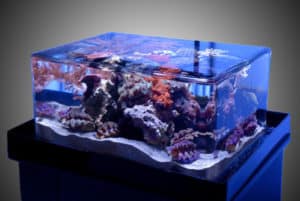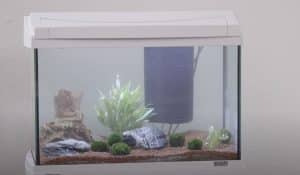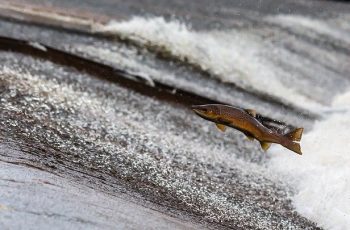How to set up an aquarium. Setting up an aquarium may seem intimidating at first, but with the right guidance, it can become a rewarding and enjoyable experience. Whether you are a beginner or an experienced aquarist, understanding how to set up an aquarium properly is crucial for creating a healthy and thriving aquatic environment. The process involves much more than just filling a tank with water; it requires careful planning, choosing the right equipment, and maintaining optimal conditions for your fish and plants.
From selecting the right tank size and filtration system to adding substrate, decorations, and cycling the water, every step matters to ensure the well-being of your aquatic life. A well-set-up aquarium not only enhances the beauty of your home or office but also provides a stable, safe habitat for your fish. This guide will walk you through the essential steps to get started, helping you avoid common mistakes and build a sustainable aquatic ecosystem.
How To Set up an Aquarium
Soil:
In aquariums up to 50 liters, the optimum soil height of the soil is estimated to be 5 cm. The best soil for the aquarium is the size of the granules, which is between 2 and 5 mm. If you fill the soil with a larger size, all nutrients are leached out with an aquarium filter.
In this case, it is possible to fill smaller floors or sand. The roots planted in it rot rapidly, and the proper filtering of the soil is thereby disturbed.
Aquarium filter and oxygen aerator:
In order to keep the water in the aquarium clean and transparent, special filters are used for water treatment, and the bottom of the aquarium is also a kind of filter. Filters help to maintain the correct chemical composition of the water; most fish in the aquarium need it. In our time, there are a variety of filters that you can easily buy yourself; the simplest ones are spongy.
Various compressors and aerators are used to saturate aquarium water with oxygen. They can be purchased separately or as part of aquarium filters. Thanks to aerators, sufficient aquarium circulation is created in the aquarium, which ensures good operation of the filters and facilitates gas exchange.
Boiler:
It is best to buy a thermostatic heater that allows you to set a specific water temperature in the aquarium, and the heater itself will hold it upright. If you want to create a tropical aquarium with heat-loving fish, the water temperature should be 25 to 30 degrees.
If your tank contains cold-water fish, the room temperature may be appropriate.
Light in the aquarium:
To properly equip an aquarium, you need to tackle the lighting, which is organized in different ways. You can both use and combine natural light. In this case, the aquarium must not be exposed to direct sunlight, as the walls of the aquarium are quickly covered with green algae.
Halogen lamps, fluorescent lamps, mercury, and simple incandescent lamps are usually used to illuminate an aquarium. The lamp power is usually determined by the volume of the aquarium, for mercury and fluorescent lamps is 0.5-1 W / l, for incandescent lamps. The power is 1.5-2 W / l.
Aquarium animals:
In order to maintain the cleanliness in the aquarium, it is recommended to have babies that maintain the ecological balance in the aquarium. Very good in the aquarium, look at Melania and Ampulyaria. These mollusks are very beautiful and eat food that fish do not eaten by fish. In spawning aquariums, it is recommended to keep Melania. These mollusks loosen the soil, clean the walls of the aquarium, filter the water, and leave no mucus behind.
- It is necessary to feed twice a day (morning and evening).
- A different amount of dry food can be picked up at the store.
- The fish also need live food
- Yes, the offspring must be planted. Since parents can eat them in the future.
It is worth starting with the establishment of the aquarium with the inhabitants whom you intend to keep in it. If you want Scrofula and the like – this is one thing, if you want Americans, another, Africans – the third, and Asians – the fourth.
It pays off to start with site preparation. The aquarium should be located along the empty wall, no closer than 1 foot from the window. Direct sunbeams are not recommended categorically for aquatourism, which will sooner or later lead to tragic consequences. The cabinet under the aquarium should stand without tilting and have a perfectly level surface. Even a deflection of 0.5 – 1 mm is not permitted, as otherwise an additional load of the soil arises. Before you install the aquarium on the cabinet, you should put a “foam” for the laminate, which is preferably folded in 2 layers.
Rinse the aquarium with a weak solution of potassium permanganate and then with warm water. Install the housing and pour upwards for a day to check for leaks. If everything is normal, we will drain the water after one day and prepare the soil.
Ideally, gravel is removed with a 3-4 fraction (better sieving) and washed well in warm, running water until the water is clear (10 – 12 washes and sometimes more). To avoid contamination, it is also better to sterilize gravel with a weak solution of potassium permanganate or a white solution diluted 1 to 20. The processing takes 5-7 minutes. Then rinse the floor again with warm water.
After these operations, cover the floor with a layer of 5-6 cm in the aquarium and level it. In the soil, it is desirable to add fertilizers to plants in the form of tablets, for example, Tetra Planta Start. Then we fill the aquarium 2/3 with water, insert the filter, turn it on at full capacity, and do not turn on the light. It is highly desirable to add Tetra Bactozyme tablets containing a complex of beneficial bacteria to the sponge filter. This makes it possible to create a biological balance. Add a water purifier to the water according to the Tetra Aqua Safe instructions.
We let the water ripen for 2-3 days, after which we plant (immediately in large quantities) aquatic plants, preferably fast-growing: Vallisneria, Peristylus, Ambulia, Ludivigii, etc. In the future, some of them can be removed or replaced by others. We first turn on the light for 4 hours a day, then add half an hour a day, and bring the light to 10 to 11 hours. 3 days after landing, you can catch fish.
In terms of the compatibility of the latter, many volumes are written. Before you decide on a fish selection, read more literature. Remember, however, the golden rule: not more than 1 fish 3-4 cm long on 2 liters of aquarium water. Never switch off ventilation and filtration.
You can feed the fish and cereal, but better frozen moth, and it is better to change the feed every other day. Feed once a day with a very small amount of food, so that the entire food is consumed in 2-3 minutes and the leftovers are removed immediately. Do not fish at all one day a week!
Replacing water with fresh water should be done at least once a week, with the volume of water to replace normally being about 15%. When replacing it is very desirable to add water conditioner according to the instructions. Clean the bottom of the “siphon” once a month.
FAQs:
What are the essential steps to follow when learning how to setup an aquarium for the first time?
Setting up an aquarium involves selecting the right tank size, choosing suitable filtration and lighting, and preparing the substrate. You’ll need to add water, condition it to remove harmful chemicals, and cycle the tank to establish beneficial bacteria. Only after stable water parameters are achieved should you introduce fish, ensuring a healthy and stress-free environment.
How do you properly cycle your tank when figuring out how to set up an aquarium?
Cycling an aquarium is crucial because it establishes the nitrogen cycle, which breaks down harmful ammonia and nitrites. This process usually takes 4–6 weeks. Start by adding water, substrate, and a filter, then introduce an ammonia source. Regularly test water parameters until ammonia and nitrite levels drop to zero, indicating your aquarium is safe for fish.
What mistakes should beginners avoid when learning how to set up an aquarium successfully?
Common mistakes include adding fish too soon, overstocking the tank, and skipping the cycling process. Beginners often overlook water testing, resulting in poor water quality and stressed fish. Avoid placing the tank near direct sunlight, as it promotes algae growth. Taking time to research fish compatibility and maintaining consistent care will lead to a thriving aquarium.
Visit our homepage to see more products: champagnereef.com
See also:




